Hearing Aid Features and Awareness
 The latest MarkeTrak 9{{1}}[[1]]MarkeTrak 9: A New Baseline. Estimating hearing loss and adoption rates and exploring key aspects of the patient journey, Final Report, March 2014, Hearing Industries Association[[1]] data related to hearing aids was presented in last week’s post, providing information about hearing aid average age, percentage of hearing aid types worn, and on how BTE (behind-the-ear) type hearing aids were coupled to the ear. This post focuses on statistics related to hearing aid features.
The latest MarkeTrak 9{{1}}[[1]]MarkeTrak 9: A New Baseline. Estimating hearing loss and adoption rates and exploring key aspects of the patient journey, Final Report, March 2014, Hearing Industries Association[[1]] data related to hearing aids was presented in last week’s post, providing information about hearing aid average age, percentage of hearing aid types worn, and on how BTE (behind-the-ear) type hearing aids were coupled to the ear. This post focuses on statistics related to hearing aid features.
Hearing Aid Feature Percentages
The percentage of feature identified by owners for their hearing aids is shown in Figure 1. Most of those surveyed indicate having a volume control (65%) or a program button (49%) to change the environmental listening setting (i.e., quiet, noise, music, etc.). Thirty-five percent report having directional (beamforming) capability, 38% say they do not have directional microphone performance, and 28% are not certain if their instruments have this feature or not.
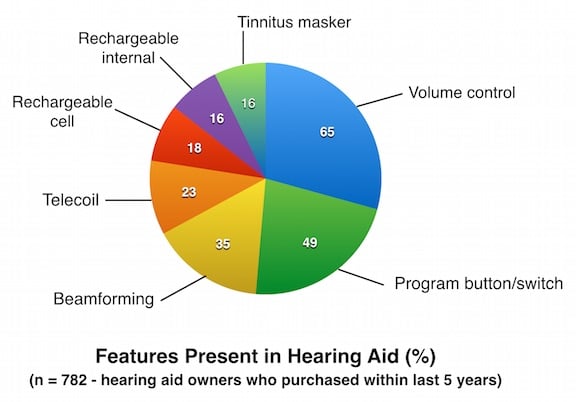
Figure 1. Features reported by hearing aid owners that are present in their current hearing aid(s). Charted from MT9 data. Multiple features exist in some hearing aids.
The telecoil feature provides some rather interesting data. Although 23% report having a telecoil, almost as many (22%) are not sure if their hearing aid has a telecoil. Of the 23% who indicate having a telecoil, 23% of them report having never used it, 64% say they have used it when talking on the telephone, 22% say they have used it in a looped room, and 3% reported having used it somewhere else (Figure 2). This totals more than 100% because of multiple answers to use.
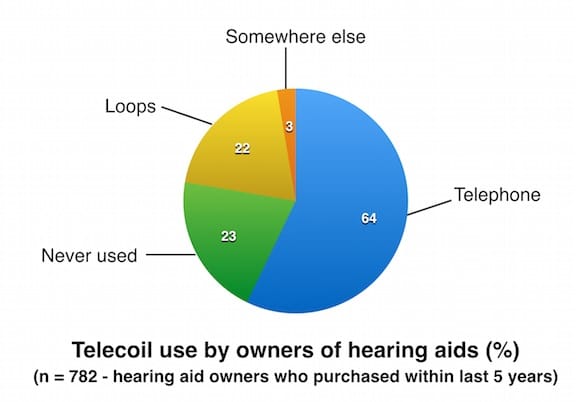
Figure 2. Reported telecoil use by owners of hearing aids. Twenty-three percent of hearing aid owners reported having a telecoil, 54% did not have a telecoil, and 22% reported that they were not sure if they had a telecoil or not. The percentages reflect the usage by the 23% who reported having a telecoil. Charted from MT9 data.
The distinction between the two rechargeable battery features discussed in the report is that with the rechargeable cell, the battery/cell has the physical size and exchange of a replaceable cell. The rechargeable internal refers to the power supply that is permanently installed into the instrument.
Confusion exists when the subject relates to any type of directional microphone capability, whether that by dual, twin, or multiple microphones to enhance listening in noisy situations (beamforming), or whether their hearing aids have this feature at all. Approximately one-third (35%) of owners indicate they have directional capability. Slightly more (38%) say they do not have directional capability, and 28% are not certain (Figure 3).
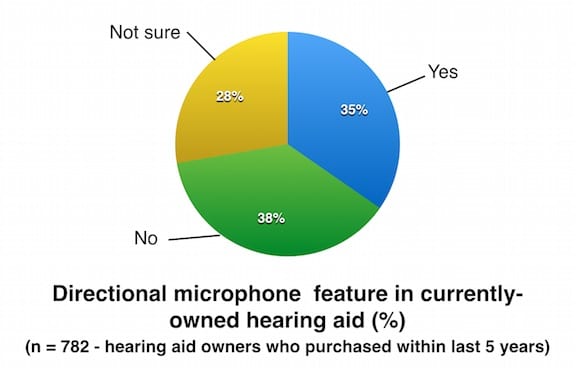
Figure 3. Hearing aid owner report on whether their hearing aid has directional microphone capability. Charted from MT9 data.
Hearing Aid Wireless Capabilities
Wireless capabilities in hearing aids have become prominent sales features. Some of these result in right and left hearing aids “talking” to each other, some to “linking” to volume and/or program changes, and some to “streaming” sound from a TV, smart phone, computer, or other electronic device to the hearing aid. How prominent are wireless capabilities in hearing aid purchases? MT9 estimates that 43% of hearing aid purchasers in the past five years have a hearing aid with some kind of wireless function based on the features listed here. Those reporting not having any wireless features were 51%, and 6% were not certain if their instruments had wireless features or not.
The percentage of owners (n= 782) reporting the status of wireless features in their hearing aids is shown in Figure 4. This shows that less than half (43%) of hearing aids purchased within the last five years have wireless features. MarkeTrak 9 does mention, however, two interesting observations relative to wireless features: (1) if only the wireless hearing aids purchased within the past year were considered, the percentage would increase from 36% to 51%, and (2) much greater hearing aid satisfaction is reported by those having wireless function (46%) versus those not satisfied (24%).
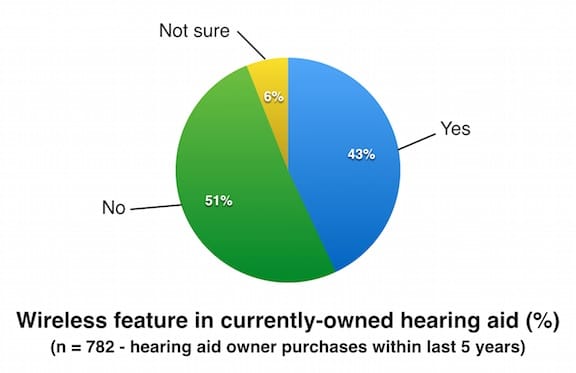
Figure 4. Hearing aid owner report on whether their hearing aid(s) has/have wireless features. Charted from MT9 data.
The wireless feature capability by current hearing aid owners is shown in Figure 5. Most of the wireless use relates to “linking” volume or program changes, or where making an adjustment using a button or switch on one hearing aid causes a change in both hearing aids of a pair (36%). The next highest use of wireless involves the ability to stream sound from a TV, cell phone, or computer into the hearing aid(s) using an additional neck-worn, hand-held, or in-pocket accessory at 20%. Streaming without an accessory, for example, from an iPhone™ directly into the hearing aid, was reported by just 2%.
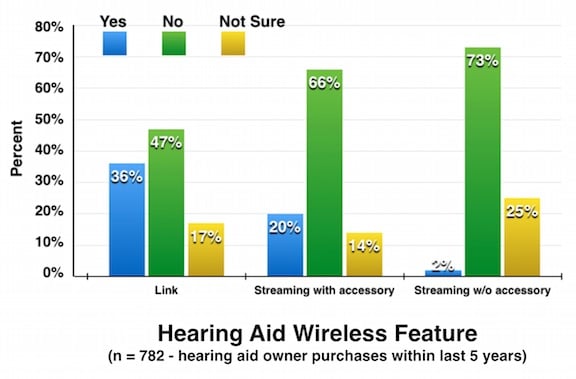
Figure 5. Percent breakdown of hearing aid owner reports of their instrument(s) wireless capabilities. (n = 782 hearing aid owners purchasing within past 5 years). Charted from MT9 data.
External Accessories or “Apps”
Most hearing aid owners do not have external accessories or “apps” for their hearing aids, according to MT9. The most commonly used such item is a remote control, which is used by just 22% of those who own hearing aids (Figure 6). The remote control adjusts the hearing aid volume level, selects programs, etc.
A body-worn Bluetooth accessory connects hearing aids to Bluetooth phones, computers, etc. (12%), while a TV streamer (12%) plugs into the television and wirelessly streams sound to the hearing aid(s). Companion microphones that wirelessly stream a companion’s voice to hearing aids was reported at 9%, and downloadable “apps” for smart phones that allow cell phones to be used as a remote control of the hearing aid were reported by 6% of hearing aid owners.
How much are downloadable apps used by hearing aid owners? Of those few that have apps (n = 47, or 6%), their use is shown in Figure 7, with reports ranging from every day use (35%) to no use (7%).

Figure 6. External accessories, or apps reported by current hearing aid owners. Charted from MT9 data.

Figure 7 . Downloadable app use by the 6% who reported having these for their hearing aids (n = 47). Charted from MT9 data.





